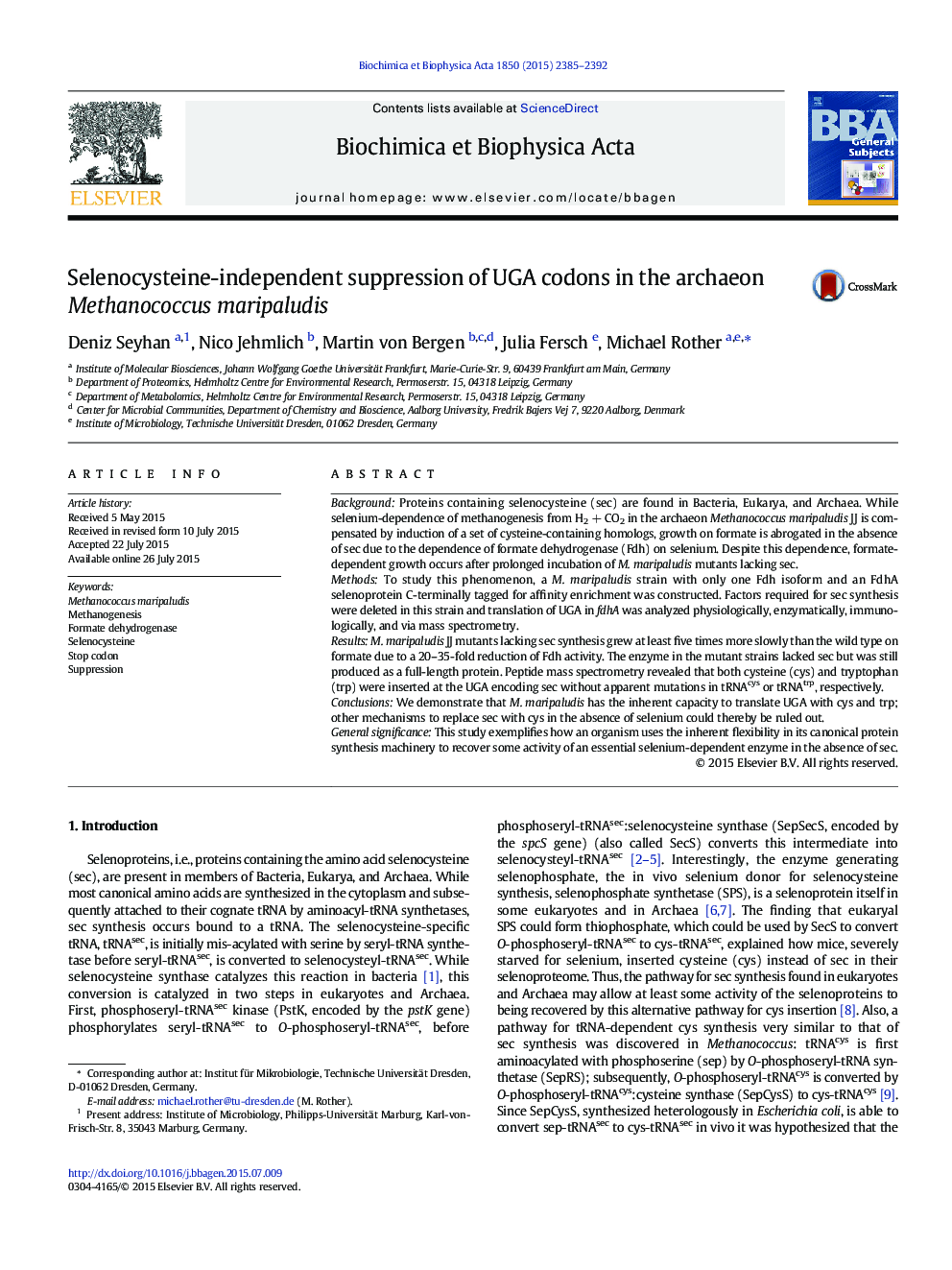| Article ID | Journal | Published Year | Pages | File Type |
|---|---|---|---|---|
| 1947409 | Biochimica et Biophysica Acta (BBA) - General Subjects | 2015 | 8 Pages |
•M. maripaludis grows on formate without sec, despite Fdh being sec-dependent.•Incorporation of other amino acids reduces Fdh activity.•Absence of sec leads to incorporation of cys and trp into FdhA1.•Incorporation of cys and trp into FdhA1 is independent of tRNAsec, PstK, or SepSecS.•Incorporation of cys and trp into FdhA1 is independent of mutation(s) in tRNAcys or tRNAtrp.
BackgroundProteins containing selenocysteine (sec) are found in Bacteria, Eukarya, and Archaea. While selenium-dependence of methanogenesis from H2 + CO2 in the archaeon Methanococcus maripaludis JJ is compensated by induction of a set of cysteine-containing homologs, growth on formate is abrogated in the absence of sec due to the dependence of formate dehydrogenase (Fdh) on selenium. Despite this dependence, formate-dependent growth occurs after prolonged incubation of M. maripaludis mutants lacking sec.MethodsTo study this phenomenon, a M. maripaludis strain with only one Fdh isoform and an FdhA selenoprotein C-terminally tagged for affinity enrichment was constructed. Factors required for sec synthesis were deleted in this strain and translation of UGA in fdhA was analyzed physiologically, enzymatically, immunologically, and via mass spectrometry.ResultsM. maripaludis JJ mutants lacking sec synthesis grew at least five times more slowly than the wild type on formate due to a 20–35-fold reduction of Fdh activity. The enzyme in the mutant strains lacked sec but was still produced as a full-length protein. Peptide mass spectrometry revealed that both cysteine (cys) and tryptophan (trp) were inserted at the UGA encoding sec without apparent mutations in tRNAcys or tRNAtrp, respectively.ConclusionsWe demonstrate that M. maripaludis has the inherent capacity to translate UGA with cys and trp; other mechanisms to replace sec with cys in the absence of selenium could thereby be ruled out.General significanceThis study exemplifies how an organism uses the inherent flexibility in its canonical protein synthesis machinery to recover some activity of an essential selenium-dependent enzyme in the absence of sec.
